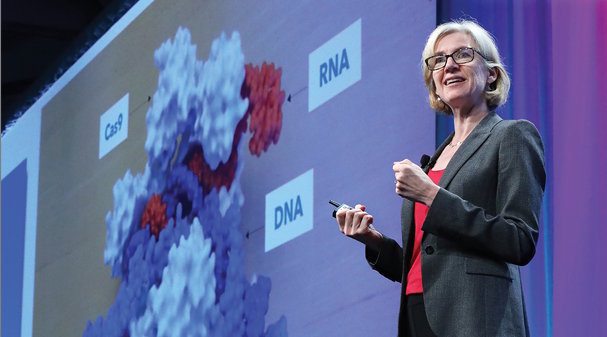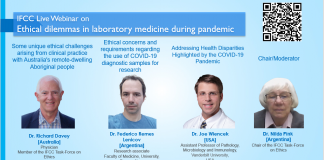“Good morning, doctor, I am here for my gene editing appointment.” In the future, could this be a greeting heard in physician offices around the world? With the introduction of CRISPR technology, genetic material can now be more easily and precisely edited, even creating changes that can subsequently be inherited by offspring.
CRISPR stands for clustered regularly interspaced short palindromic repeats, and is often used as shorthand for the CRISPR-associated protein 9 (Cas9) technology that in the lab can remove and replace specific sequences of DNA. Scientists now expect that it will be harnessed to treat and or possibly cure debilitating diseases such as sickle cell anemia, Duchenne muscular dystrophy, Huntington’s disease, HIV, and cancers. Preclinical studies are underway to assess the safety of CRISPR-Cas9 and its ability to discriminate healthy from non-healthy cells.
Jennifer Doudna, PhD, a geneticist and a co-creator along with Emmanuelle Carpenter, PhD, of the CRISPR-Cas9 technology, delivered the Wallace H. Coulter Lectureship Award plenary on Sunday with her talk, “CRISPR Biology, Technology & Ethics: The Future of Genome Engineering.”
A key leader in the field, Doudna detailed her laboratory’s innovative findings that she has collectively referred to as a “molecular scalpel for genomes.” She intrigued the audience by reviewing the intricate bacterial CRISPR adaptive immune system and how her lab harnessed its power to edit genes. She also delved into CRISPR’s potential applications, current limitations, and ethical concerns. Work is ongoing aimed at making CRISPR more amenable to fighting disease.
Doudna explained how her current research is refining CRISPR–Cas9 to improve its efficiency and prevent off-target mutations. Her laboratory has developed a CRISPR–Cas9 targeted gene knockdown method with enhanced efficiency. This method employs techniques such as single-particle electron microscopy to delineate the molecular mechanisms underlying the highly diverse CRISPR-Cas networks.
Several researchers already are using CRSPR to edit genes. Gene editing research in animal models involving mice and monkeys, in human embryos, and in HIV-infected human cells show promise. For example, in 2016 Lu You, MD, and colleagues at Sichuan University in Chengdu became the first group in the world to inject CRISPR–Cas9 modified T cells into patients with non-small cell lung cancer. The technology also is being used to speed pharmaceutical research and identify targeted therapies for somatic and heritable diseases.
A scan of ClinicalTrials.gov produces more than 10 clinical trials focused on examining the efficacy of CRISPR-Cas9 in diseases as varied as human papillomavirus-related malignant neoplasm (NCT03057912), HIV-1 (NCT03164135), sickle cell disease (NCT03167450), and prostate cancer (NCT02867345). The majority of these trials have not commenced patient recruitment.
What social and ethical frameworks should we use to consider research using CRISPR-Cas9? Be sure to attend the Wednesday afternoon symposium, “Ethics in Laboratory Medicine,” where Seema Mohapatra, JD, MPH will present “Legal and Ethical Issues with Mitochondrial Replacement and CRISPR-Cas9.” She will discuss the applications of technologies such as developing so-called designer babies, and the controversy surrounding what impact CRISPR gene editing will have on modern eugenics. Mohapatra has written in law journals about the need to examine such technology through the lens of “reproductive justice” and “disability justice” to ensure that all voices are heard and all populations can benefit from such powerful scientific discoveries.
CRISPR-Cas9 and mitochondrial replacement technologies are here, and the widespread opportunity for their clinical use in humans is imminent. Laboratorians, what roles will you play in ensuring the ethnical use of these powerful technologies?
Author: Octavia Peck-Palmer, PhD
Source: AACC











